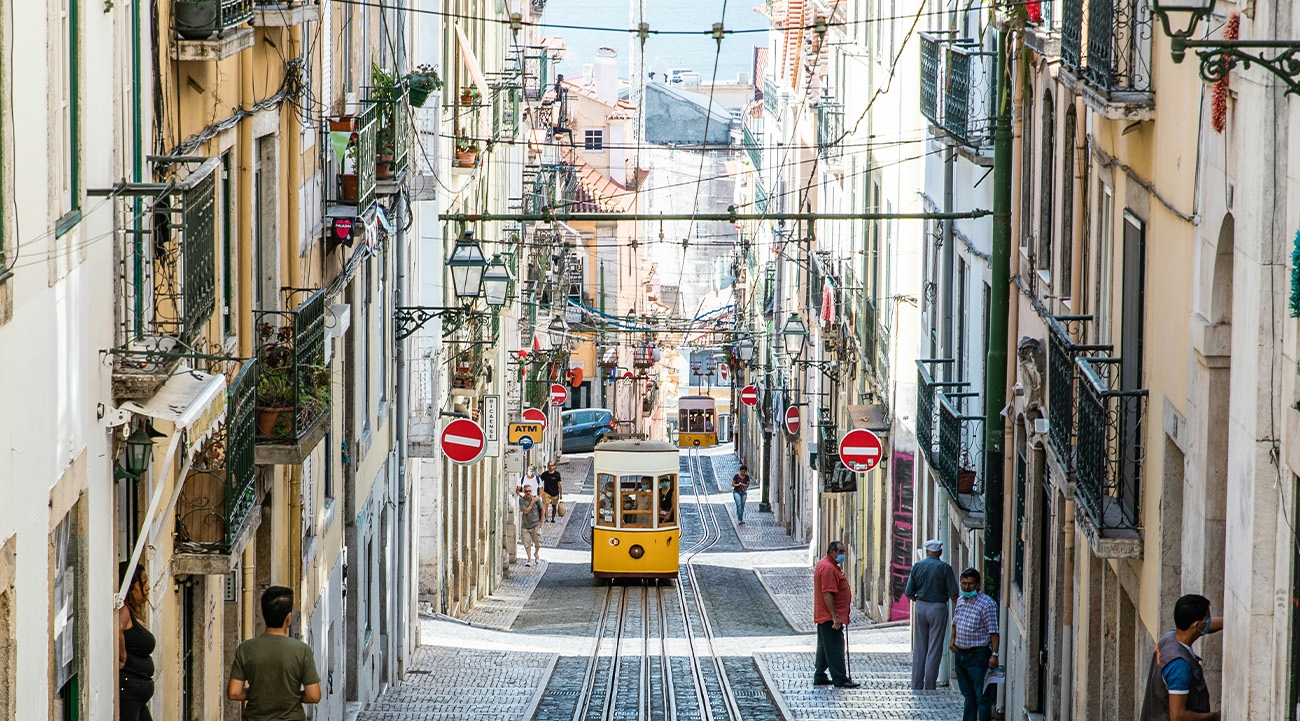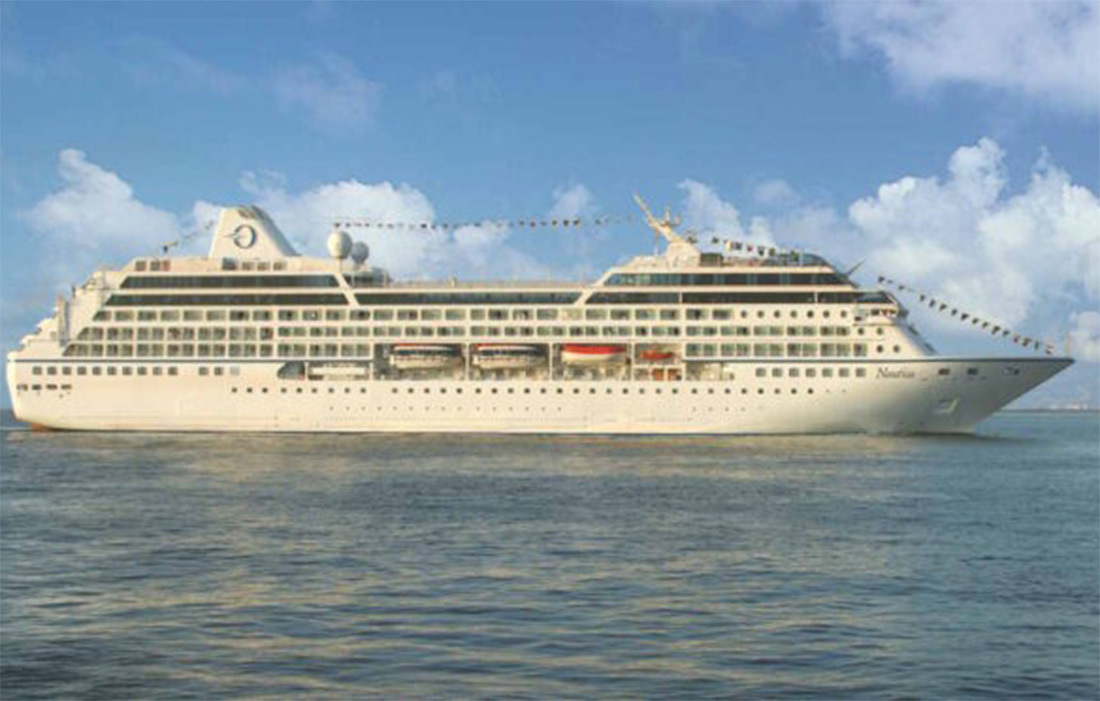Where to stay and what to do in lively Lisbon
Cobblestone streets, intricately decorated buildings and musicians on every corner – I knew as soon as I arrived in Lisbon that it was a destination I would want to return to time and time again. It’s a city where old meets new.
Period touches are clearly displayed through 14th-century, tile-clad structures, ancient architecture and vintage trams, while the contemporary edge radiates through vibrant street art and countless trendy rooftop bars.
There is a charm to the city that is almost intoxicating. Although Lisbon is easy to navigate on foot, the winding streets are steep, so make sure your clients pack comfortable shoes. Meandering around the city can easily be broken up by plenty of all-important pastel de nata breaks too.
Whether your clients are art and culture lovers, self-confessed foodies or history enthusiasts, Lisbon has universal appeal.
Why sell it
Recent years have seen tourism to Lisbon boom. In 2023, Portugal welcomed 30 million tourists to the country, of which 6.5 million were to the capital.
It’s hardly surprising given the surge of new restaurants diversifying and elevating Lisbon’s culinary scene, the abundance of festivities and events for travellers to immerse themselves in within the city’s vibrant culture, and a growing number of high-end hotels.
There’s so much to explore in Lisbon that recommending an extended city break will be an easy sell. Plus, it’s a great destination to combine with other parts of the country.
Up the coast, the city of Porto is about two-and-a-half hours away by express train, or travellers can easily head to the Algarve for a beach break via a direct, three-hour train to Faro.

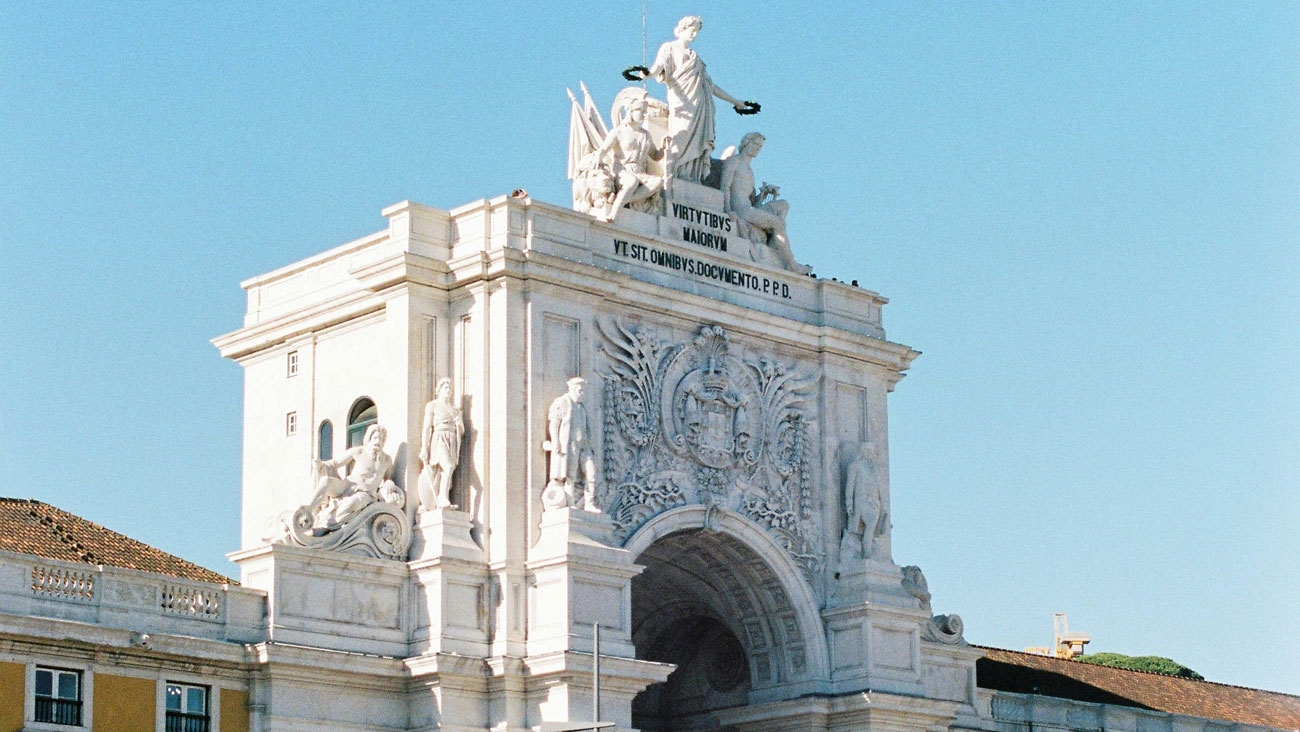
What’s new
Restaurant openings are amplifying Lisbon’s foodie scene. Vibe by chef Mattia Stanchieri, for example, opened its doors in May.
This fun fine-dining venue, set in a sleek basement, offers a seasonally changing tasting menu focused on global cuisines with a local twist. New attractions include the Graça Funicular, which carries passengers up the steep hill connecting the Graça and Mouraria neighbourhoods, offering a unique way to take in some of the city’s best views.
Following a regeneration in 2021, Sul e Sueste Station on the Tagus riverfront offers a host of river-tour sightseeing excursions, taxi boats and hop-on hop-off trips.
On the hotel front, Nobu Hotel Lisbon is planned for 2025. The 72-key property will sit on the famed high-end shopping boulevard Avenida da Liberdade.
Kimpton Lisbon is also slated to open in early 2025, with 141 rooms and a rooftop pool and bar. To accommodate rising tourism, this year the Portuguese government announced the construction of a second airport in the city, planned for completion in 2031.
When to go
With around 300 days of sun, Lisbon is a year-round destination. For clients who want to avoid the crowds and scorching heat in favour of a slower-paced city break, the shoulder seasons are the best time to visit.
From March to May, temperatures reach highs of 18C-22C, while from September to November they can still hit 26C. Bearing in mind this is a city best explored on foot, the milder months are even more appealing.
However, from June to August, live music, contemporary art fairs and the month-long Saint Anthony Festival in June flood the city with street food markets, colourful decorations and traditional fado music.
If you can handle the increased heat and sheer number of visitors, it’s worth considering a summer visit.
Where to stay
Four Seasons Hotel Ritz Lisbon is the obvious choice for affluent clients, and with a picturesque location next to Eduardo VII Park, you can’t go wrong. There’s also Corinthia Lisbon, which is in the city’s business district and just a short 15-minute drive from the airport.
However, it’s Lisbon’s boutique hotel scene that really shines. There is a smattering of luxury gems set in prime central locations in the city’s most characterful districts. Bairro Alto Hotel – a Leading Hotels of the World property – is located in Lisbon’s lively nightlife neighbourhood.
Don’t worry though, the hotel is soundproofed so guests can soak up the atmosphere and still get a good night’s sleep. Autograph Collection’s The Ivens can be found in Chiado, a high-class shopping district as well as a popular haunt for theatre-goers and gastronomists.
A seat at its restaurant, Rocco, is a coveted spot for locals and travellers alike. For a slower-paced oasis in one of the city’s most elegant districts, check out Palácio Príncipe Real. This renovated 19th-century palace features 28 rooms, expansive gardens and a heated outdoor pool. Plus, breakfast can be served as late as guests desire.
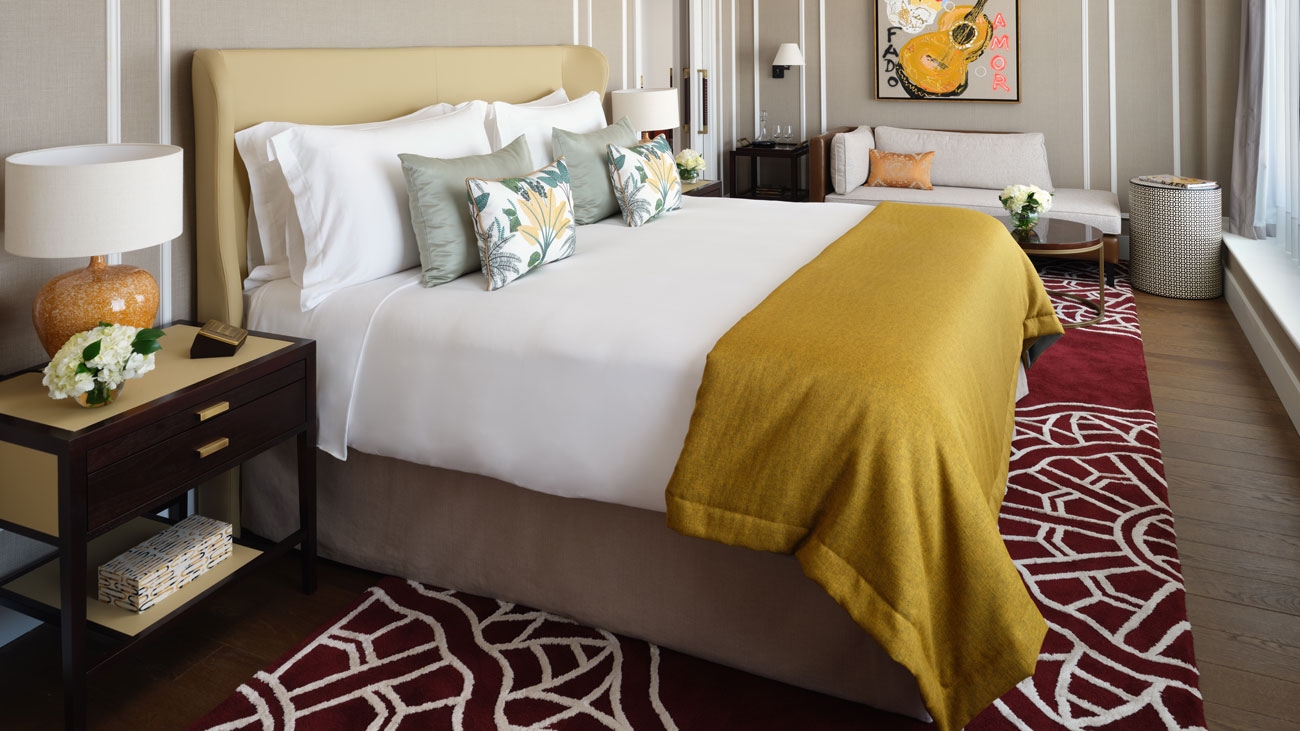
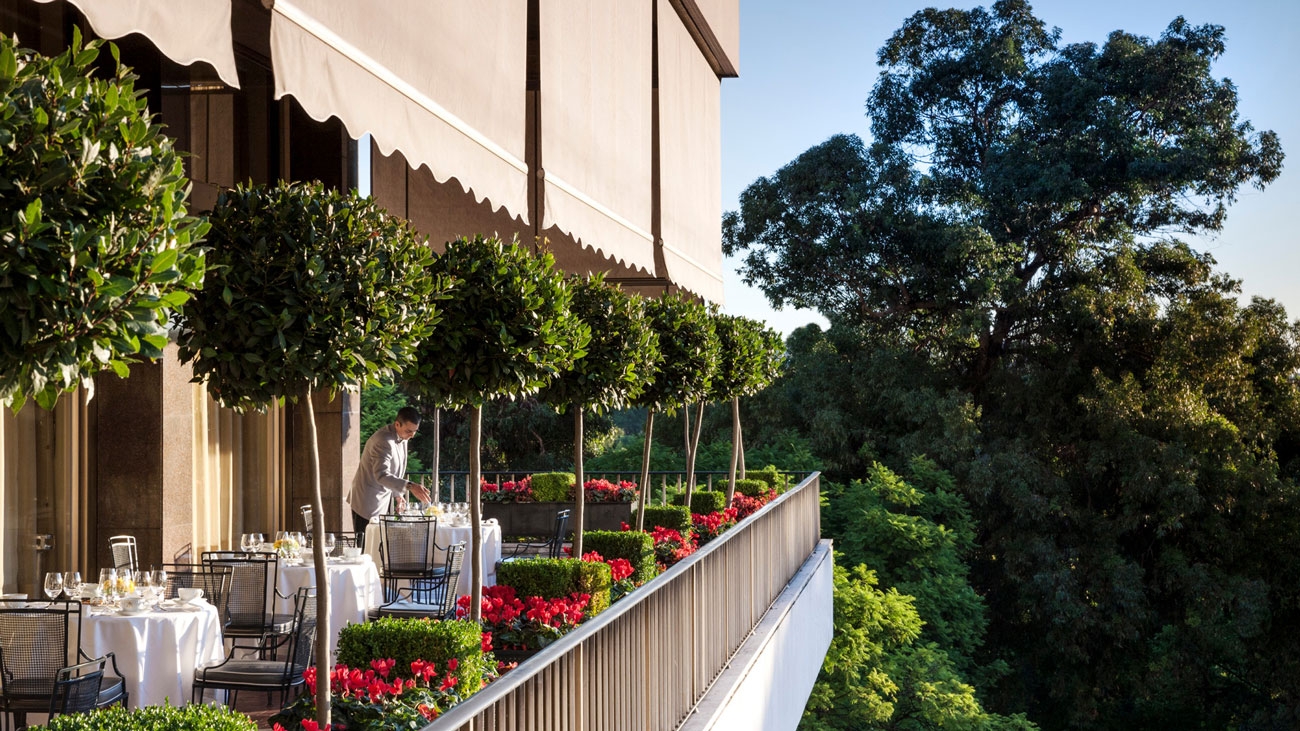
What to do
Set out on foot and get lost among the city’s winding lanes. It’s easy to stumble upon colourful street art splashed upon buildings or a courtyard of people dining and drinking alfresco.
Clients wanting to save their legs from any strain can hop on the vintage, yellow-painted Number 28 tram. It rambles from the central Baixa district to charming neighbourhoods such as Alfama and Estrela and is a great sightseeing route for those visiting for the first time.
The tram can get very busy, but can also be booked for group private hire. Make sure your clients leave room in their suitcase as it’s difficult not to be enticed by Lisbon’s artisan shops, selling everything from hand-stitched leather gloves to colourfully decorated sardine cans and ornate ceramics.
Head to The Feeting Room, an independent concept store in Chiado showcasing Portuguese designers. Or, Avenida da Liberdade is the city’s premier shopping hotspot, home to big-name fashion labels.
The wide cobblestone avenue was built in the 19th century and designed to mimic Paris’s iconic Champs Elysees.
What to see
Lisbon’s vantage point as a hilly, coastal capital city means there are a host of miradouros (viewing points) offering serene views of terracotta rooftops and grand architectural landmarks cascading down to the waterfront. Check out Miradouro de São Pedro de Alcântara, where a large terrace and gardens offer views of Castelo de São Jorge.
In June, during Saint Anthony Festival, the space is bustling with tourists and locals listening to live music and enjoying various kiosks serving refreshments such as sangria and grilled sardines – a Lisbon speciality.
The city’s highest viewpoint, Miradouro de Senhora do Monte, is usually a quieter spot and has views across the whole city. Castelo de São Jorge is visible from almost every point in Lisbon, but visiting the site to wander the idyllic gardens and see the architecture up close is definitely worth it.
I would recommend visiting in the morning or late afternoon and buying tickets online to skip the queues.
Just a short train journey from Lisbon’s city centre is Belém, home to stunning architecture such as Unesco World Heritage site Belém Tower and the Jerónimos Monastery. The area is also said to have the best pastel de natas in the city at Pastéis de Belém.
Where to dine
From gourmet fine dining to quaint local hidden gems and lively street markets, Lisbon’s food scene is eclectic, to say the least.
Two-Michelin-starred Belcanto is regarded as one of the best restaurants in the city, offering a choice of three tasting menus that reimagine Portuguese flavours.
New to the city’s Michelin-star roster is 2Monkeys, where 12 guests are seated with a front-row view of the kitchen while being served a secret menu. Sála, which also earned its first Michelin star this year, is perfect for seafood lovers with unique dishes such as spider crab and smoked eel.
It’s also worth visiting some of the local favourites for authentic flavours and a bustling atmosphere. Recommend that clients head to Time Out Market Lisboa for a fusion of the city’s must-try dishes and global cuisines, all under one roof.
Farther afield
If travellers want to head out of town, recommend these spots – just a short journey from Lisbon
Cascais
For gorgeous beaches and a historic old town, jump on a 40-minute train along the coast to the seaside town of Cascais.
Praia das Moitas beach is small yet lively, while Praia do Ribeiro do Cavalo, which overlooks the harbour, is more tranquil. Head to Mar do Inferno for the freshest seafood.
Óbidos
This small medieval town, enclosed within city walls, is a step back in time. Climb up to the castle and gaze at the picturesque countryside landscape.
The town holds events throughout the year, such as the International Chocolate Festival in spring and the Medieval Market in summer.
Cabo da Roca
About a 40-minute drive west of Lisbon is the westernmost point of mainland Europe. With rugged cliffs overlooking the Atlantic Ocean, this is a perfect spot for a coastal hike or to watch the sunset on a warm evening.
Book it: A three-night stay at the five-star Bairro Alto costs from £998 per person based on two sharing, including flights from London, return private car transfers, breakfast, the ‘Lisbon Card’ and a Kirker Concierge.
kirkerholidays.com
